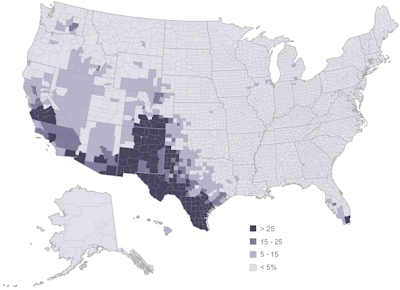 For as long as most can remember the U.S. Hispanic population groups always centered on Mexicans being #1, Puerto Ricans #2 and Cubans #3.
For as long as most can remember the U.S. Hispanic population groups always centered on Mexicans being #1, Puerto Ricans #2 and Cubans #3. But change is on the way. The Salvadoran community in the U.S. is growing at a more robust rate (33%) compared to the Cuban community (17%). Due to this growth surge Salvadorans may soon replace Cubans as the #3 U.S. Hispanic group.
In Los Angeles we are experiencing this growth directly. In the summer of 2012 the city of Los Angeles declared a section of Vermont Ave as the "El Salvador Community Corridor", the first designated Salvadoran neighborhood in the city.
There are some parallels between the Salvadoran and Cuban experience in the U.S. In the 80's many Salvadorans fled the violent civil war in their country as refugees and settled in the U.S., with many arriving to the Los Angeles area.
Today Salvadorans are a thriving community in Los Angeles, opening up businesses and running for City Council slots. No doubt the U.S. Hispanic population is expanding across the country exponentially, but in the established core Hispanic population centers, like Los Angeles, change is in the air as well.
Link: http://www.pewresearch.org/fact-tank/2013/06/19/salvadorans-may-soon-replace-cubans-as-third-largest-u-s-hispanic-group/













